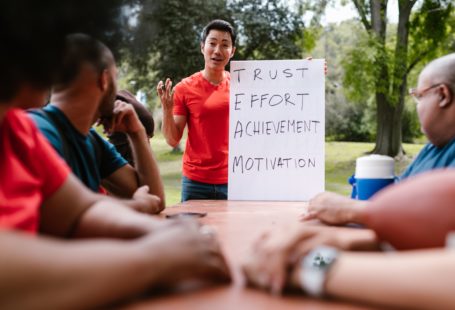Creating a product could be a complex process, and it takes a mix of skills, including a technical background. The idea of this post is to help non-technical founders in this journey with questions that, based on my experience as a founder of a company, could prevent mistakes that clients made when they built a product.
How deep is your understanding of technology?
Being a non-technical founder, your main goal is not to learn how to code, but you must understand some technology as basic as it sounds; if you are doing a mobile app for iPhone and Android, at least have an understanding of how they work or take an online course of basic programming, to understand the very basics.
Try to review examples and learn the concepts that will involve your product; if it’s mobile+web or something else, you don’t need to know the language, but the idea will allow you to understand your technology partner and the feedback that you might get as the founder of the company.
This also goes to shortcuts that you sometimes have for technology and development like (cross-platform development) this could help but only in specific cases, and get that you must read (it is simple to understand) and will save you a lot of headaches, especially if you have clients waiting for the product.
Is the idea validated?
This is a simple matter, and this happens to everyone; you might think that your idea is the best and that no one else has it; well, that could take you to the following statements:
- Perhaps there’s no market for the concept
- Why did no one else try? or perhaps how many already tried?
- Who will use it?
- How you’ll make money from this?
- What features will make my MVP?Competitors?
People think focus means saying yes to the thing you’ve got to focus on. But that’s not what it means at all.
Do you understand the development process?
I think this is a vital ingredient in creating a product because you can have a great idea and a great development partner, but the result is a mess, and this is because it is not clear how the development needs to be done.
Are you looking to be involved in the Process?
As a company founder, you must follow a procedure or framework if you want to be involved. It doesn’t matter if it’s agile, scrum, or whatever you want to use. You must follow something; otherwise, it will be a messy process, and it will cause a low-quality product or will make your development partner go away (be careful; you can have an A-Team for growth, but if you don’t have an order or Process, they will go away, even when the idea is excellent)
Or do you want your deliverables and just the final product?
Even if you don’t have the time or the energy to understand the Process, at least try to understand the stages, for example, prototyping, visual design, and development; otherwise, you’ll create a mess for everyone.
Based on my experience, I recommend active involvement in all processes. You can witness the product’s evolution, provide feedback at every stage, and make changes as needed.
Better Done than Perfect?
Non-technical founders sometimes prioritize perfecting the product over releasing it, and I’ve witnessed many good products go bankrupt as a result. The idea of perfection is good, but if you try to be perfect, you’ll never finish, which means you’ll never launch. You will (for sure) run out of funding, or the potential clients will go because no one will wait for you.
For example, this happened to a former client; they wanted to have everything done (meaning all features and phases of their product); we explained to them that the idea is to launch and fail fast, get feedback, and pivot if necessary; in this case, they tried to have all mobile applications and web flawless, in that Process we spent 12 months (again this was a brilliant idea) at the end of this period they lose all funding, they re-create the visual design three times.
I know it is hard to ask the founder of the company to launch something not-perfect, but it is even worse launching nothing with this. I’m not saying to launch something buggy, but the idea of the MVP is to launch and get feedback and continue based on that and remember, if you have a technology partner (use it!)
Who’s giving you feedback, and how are you collecting it?
Feedback is the most critical part of product development (and in general of everything, how could you improve without it?), following a couple of items that you must be aware of to get feedback
- The founders, technical or non-technical most of the time, are not the best to provide feedback!
- Get user feedback and incorporate it into the next phase after prioritizing key features.
- Not all the feedback is essential; you must be able to understand what everyone requests and what some may ask for just occasionally.
- Don’t get upset if you receive feedback you don’t like.
- Be careful of the audience that will use your product; the term kids is not the same as kids between 8 – 13 (I had a lot of experience with that mistake when we were building mobile games)
- You can collect the feedback with surveys, interviews, and recording the reactions, there are many ways to do that, and you can get feedback from the early stages with the visual design and wireframes.
How to select a good technology partner?
Choosing a tech partner involves more than appearance and portfolio; it’s about the following aspects:
- How do they work? The Process? Do they follow something?
- Do they have a checklist based on the technology and product development phase?
- Do they have similar experiences?
- Did they provide you feedback once you explained the idea?
- Can you tell if they care about the project?
These are just a couple of items, but the main one is trust! Distrust? Change your partner/provider. A quote without details is a red flag!
You will never finish the product, so start selling.
Suppose you wait until we finish the product. In that case, as the founder of the company, you’ll have precious time because developing the sales engine to get customers takes time, so this means that after a couple of months of development (if you are lucky!), you’ll have to wait weeks or months to get prospects, so that’s why to get wireframes or a power-point and start selling use your strengths as the founder of the company to get customers. The development never will finish because a product is an entity that will live as long as you have customers.”
We once sold a product using a 5-hour mobile mockup. The prospect liked it and bought it. However, it took us three months to deliver, so act quickly.
Has the development been completed?
Assume that development is an ongoing process even when you have all main features done, technology improves/changes and evolves. Here are a couple of tips that might help you in this journey:
- Mobile Apps change a lot. Apple releases new phones and new operating systems; Android does almost the same thing
- Select your target devices on Android and expand the list as your product and audience grow.
- Something as simple as a new browsers update must be in your backlog to improve your product
- Feedback will always come to you, so you need to add it to the next version of your product
As a non-technical co-founder, learn from others’ mistakes and save time and money by following these rules.






